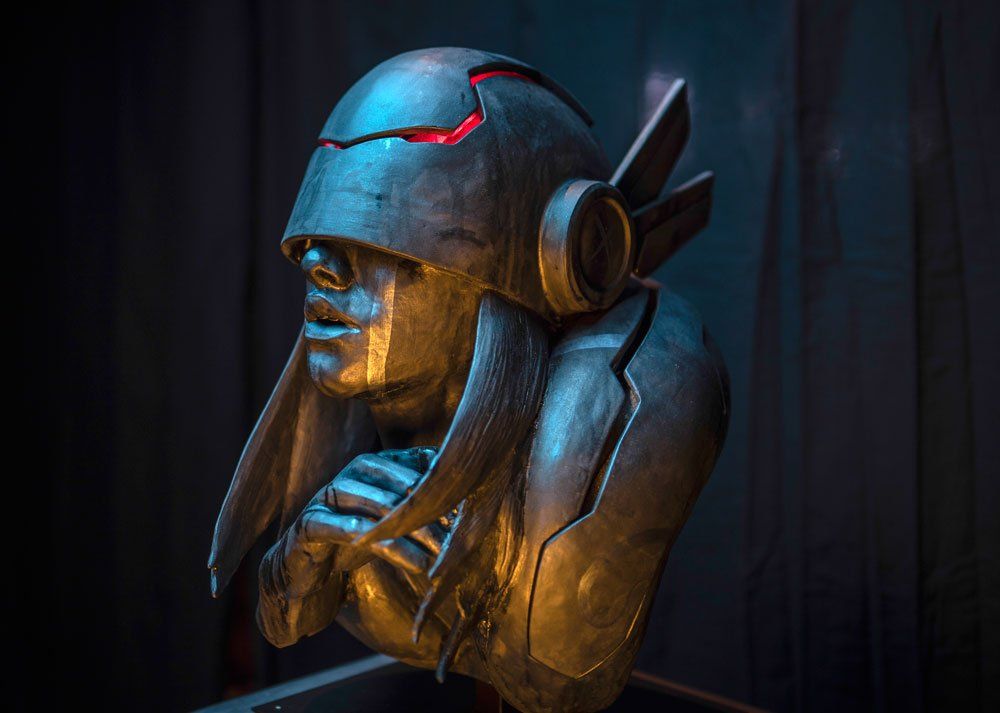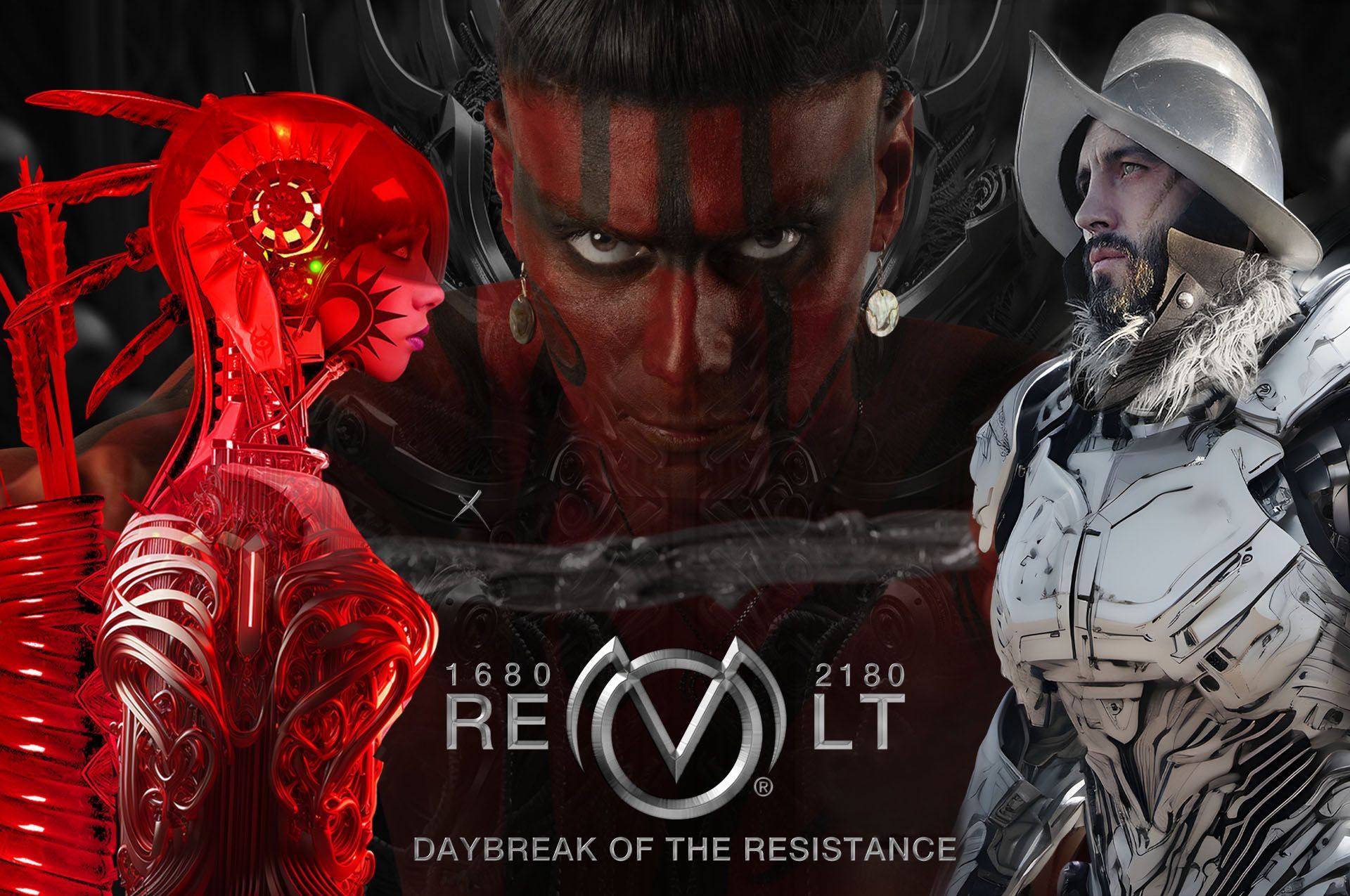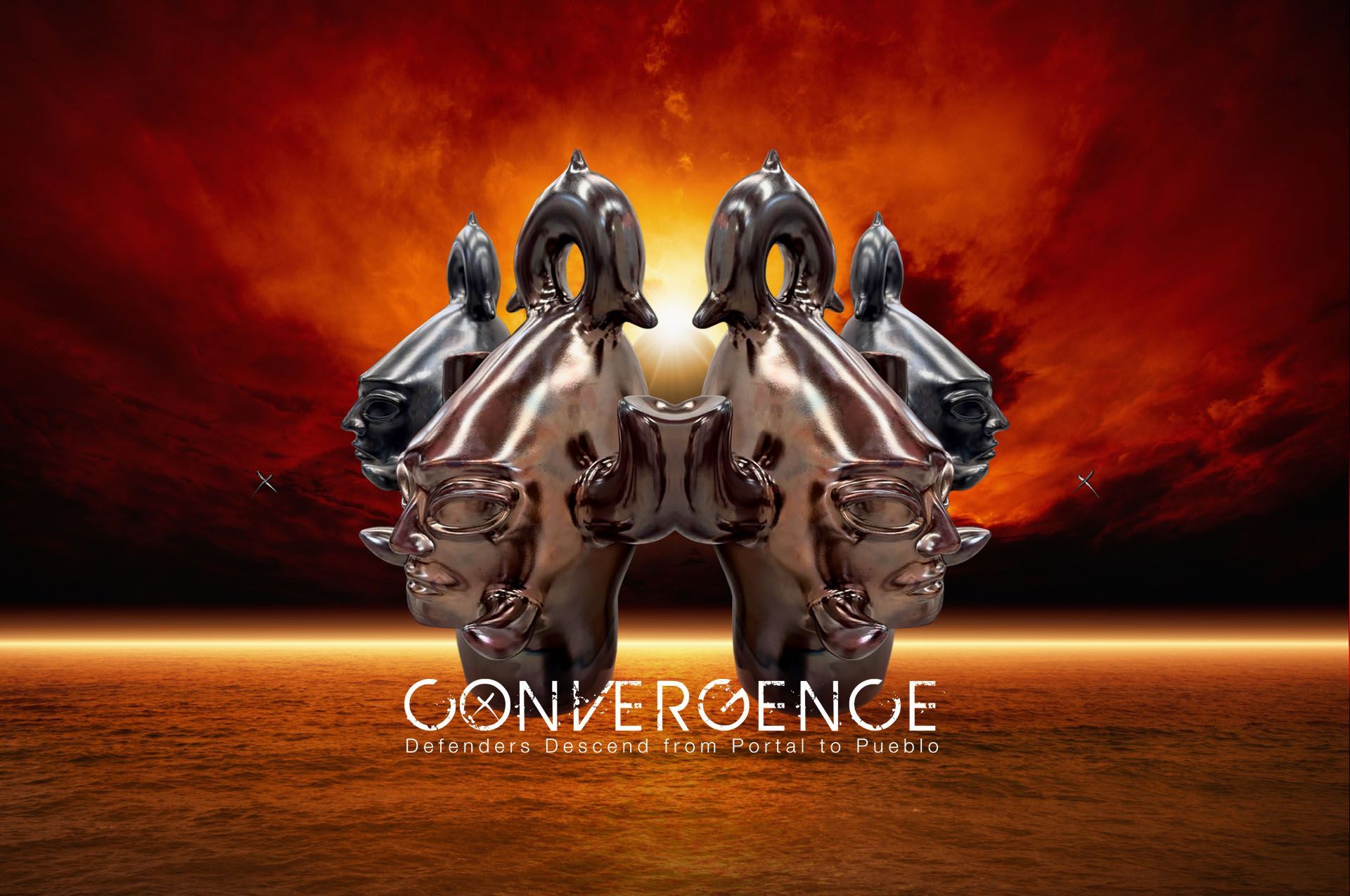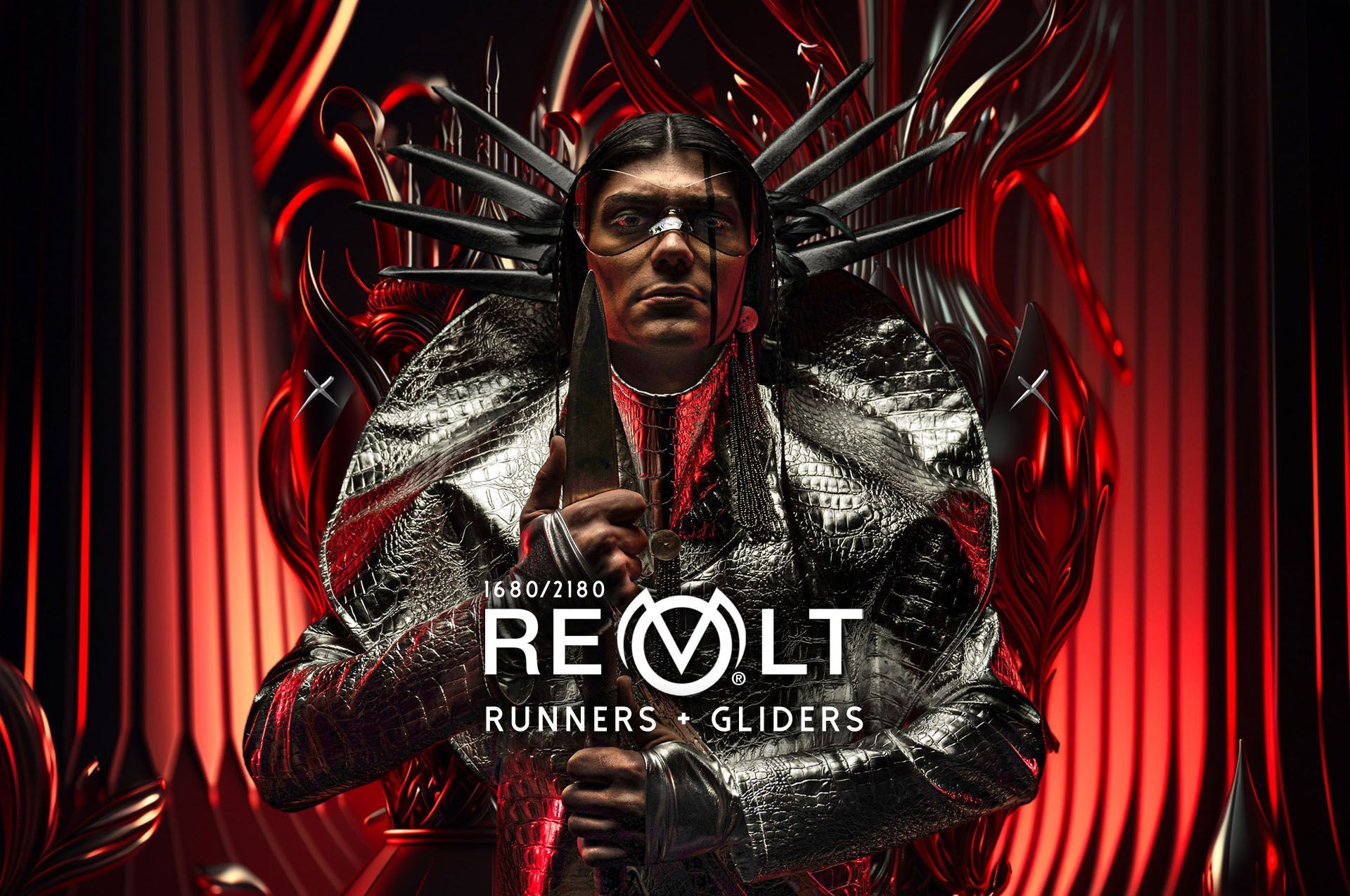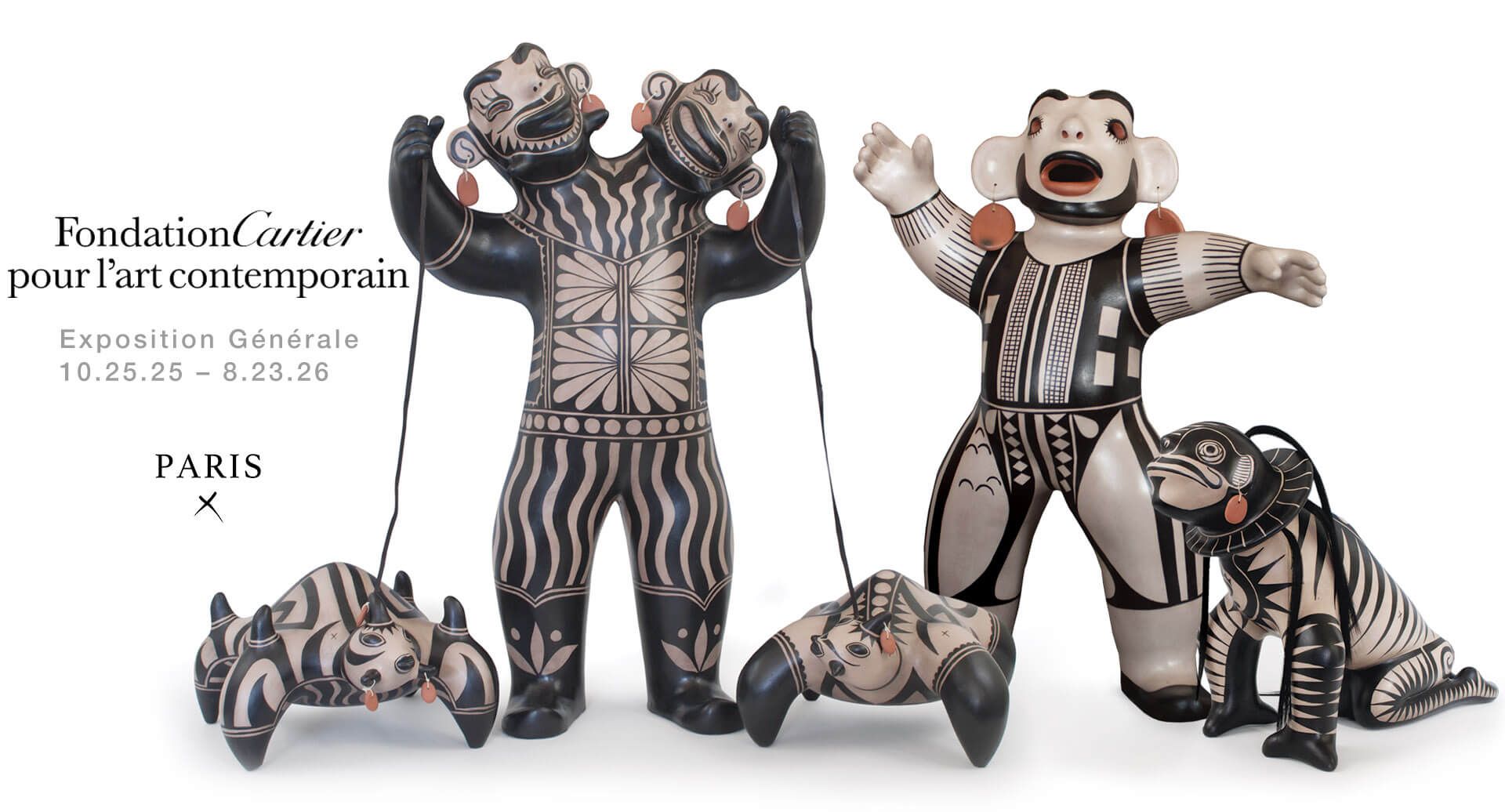
Virgil Ortiz dipped a brush into an orb of black paint on his palm, swirled it amid the contours of a model’s neck, then spiraled it downward around his chest. He says the designs could be mustaches or sperm tails.
Crowned in a black helmet of plastic foam blades, the model’s character is named Kade, one of 19 featured in Ortiz’s saga of the 1680 Pueblo Revolt. The number is deliberate, signaling the 19 pueblos remaining today.
Internationally renowned for his pottery, Ortiz is preparing for “Revolution,” an exhibition of pottery, glass, fashion, video and more opening in October at Colorado College in Colorado Springs.
Topped in his trademark black fedora, Ortiz has been germinating a script for a film version of “Revolt 1680/2180,” his sci-fi-meets-pueblo version of the revolt, for years. Its updated characters sport S&M echoes of leather and headgear embellished in pueblo motifs. The story is the artist’s palette and passion. It infuses Ortiz’s pottery vessels, figures, clothing, glass, and videos.
Forward Thinking
“Revolution” is partly an outgrowth of a 2015 show staged at the Denver Art Museum. The exhibit will feature nine objects in the museum’s permanent collection, expanding into the animal figures inherent in Ortiz’s current work.
“It’s the futuristic aspect of it that speaks to me personally,” Colorado College curator Joy Armstrong said. “He’s re-conceptualizing a current event that’s so compelling and exciting. I thought it would be a perfect fit for us.”
Ortiz learned traditional pueblo pottery techniques from his mother Seferina, who learned it from her mother Laurencita Herrera. Famous for the storyteller figures revived by Helen Cordero in the 1970s, Cochiti functioned as a nexus of clay figures long before European contact. When the Spanish invaded New Mexico, they were determined to force Catholicism on the natives.
“They were accused of trading in witchcraft and sorcery. They started making caricatures of the non-natives in clay,” Ortiz said as he worked in the sprawling 4,000-square-foot studio his fellow pueblo members refer to as “the church.”
Those figures included circus sideshow characters such as strong men, opera singers and railroad tourists that stood up to three feet tall.
Once the Spanish caught on to the satire, the art form lay dormant until Cordero revived it with more portable and palatable depictions of seated figures holding children.
“It had lost all the social commentary,” Ortiz explained.
“That’s when I started to tell the story of the Pueblo Revolt in clay.”
As he worked, the figures grew larger and more ornate.
When Ortiz was 15 or 16, his parents introduced him to Albuquerque pottery dealer/collector Robert Gallegos.
“He had the largest collection of historical pieces (from Cochiti) and they were almost exactly like mine,” Ortiz said. “My mouth dropped. From then on, I knew I was going to be a potter.”
Gallegos challenged the young potter to produce bigger and more experimental work.
“Virgil took the challenge,” Gallegos said. “A month and a half later he brings back an S&M figure. I was absolutely shocked, but what was impressive was he had a beautiful male face.
“I realized it was important. If you look at his history, he’s always pushed the limits.”
Profile Rising
Soon Ortiz was selling his work in Santa Fe in his own boutique. A 2002 call from New York fashion designer Donna Karan rocketed him to national recognition in a collaboration translating his graphic designs onto fabric.
“The next step was I was on a plane to New York,” Ortiz said. “I was being like a sponge the whole time.”
He learned about manufacturing, even teaming up with the maker of the famous Ferragamo shoe line for his handbags.
“They all tell our story as well,” he said. “The designs I take are from our traditional pottery designs.”
A silver cuff encircled by the wild spinach flower, the plant used in black pottery paint, hugs his wrist. The triangular-shaped “rez spine” design bisecting his handbags could be cloud motifs or the kiva stepladder.
“For our people, that’s the portal to the next life,” he said.
Ortiz maintains most Americans know nothing about the Pueblo Revolt.
“When I do shows in Prague or Paris or Amsterdam, all the people already know the story of the Pueblo Revolt,” he said. “But when I’m in New York or San Francisco, they don’t know the story of the Pueblo Revolt.”
The Pueblo Revolt of 1680 was one of the most significant events in New Mexico history, according to the Office of the New Mexico State Historian website.
The systematic destruction of Pueblo kivas and the suppression of ceremonial practices reached a critical point in the 1670s.
Ohkay Owingeh Pueblo’s Popay was the principal leader of the rebellion. The natives laid siege to Santa Fe for nine days, cutting off the Spanish water supply. The uprising killed more than 400 Spaniards and drove the remaining 2,000 Spanish settlers south toward Mexico.
“It was the first American Revolution, but they don’t talk about that,” Ortiz said.
Thinking Different
By embroidering the story in a futuristic theme, Ortiz hopes to attract young fans to what he sees as neglected history. He says the Walt Disney Co. has shown interest in his script.
“It’s all still talk,” he cautioned.
A recent pottery jar reveals a more current political target. The design depicts a raging Donald Trump with a viper. Ortiz calls it “My Prediction.”
“This takes us back to the original (pottery),” he said. “This is exactly what they were designed for. He’s greedy, so he’s holding money. It shows him slowly being overtaken by the snake and he’s turning into a skeleton. He’s finally tossed out by a woman’s hand.”
At 49, Ortiz says his bucket list includes creating figures as large as the life-sized terra cotta army in China.
“A lot of people call me innovative,” he said, “but I just refer them back to the traditional work. I don’t think I’m being innovative at all. I’m not really special. I feel like I’m only a bead in a necklace.”
By: Kathaleen Roberts / ABQ Journal


